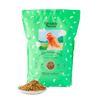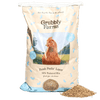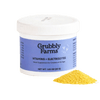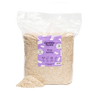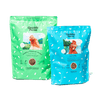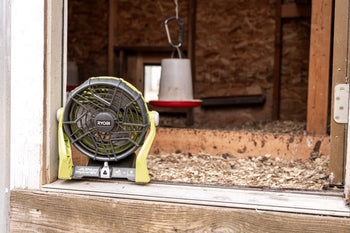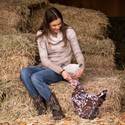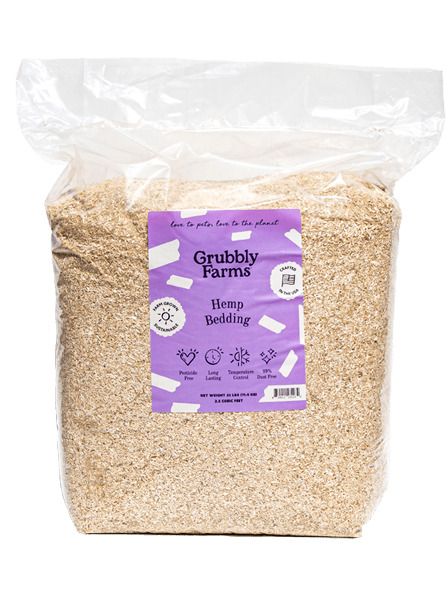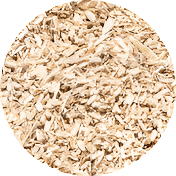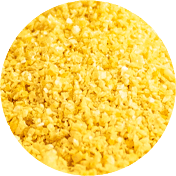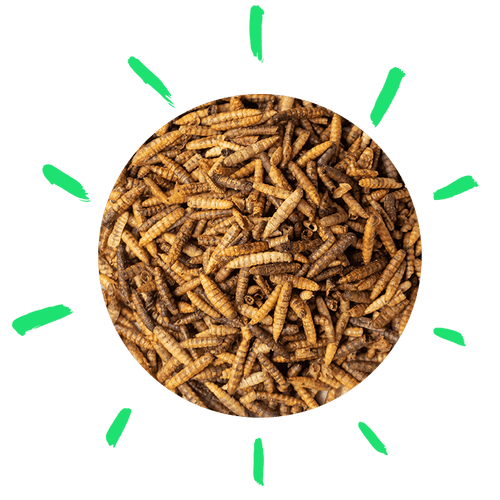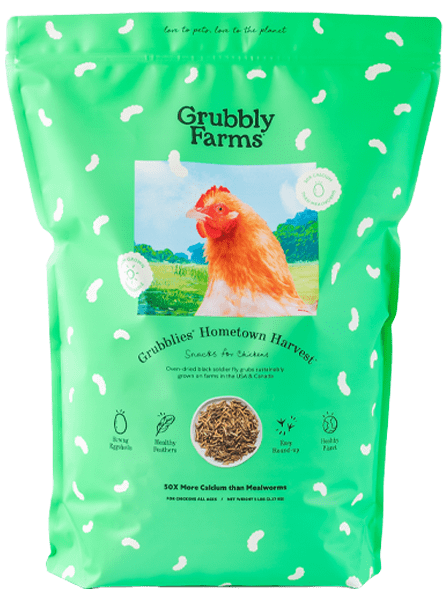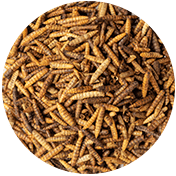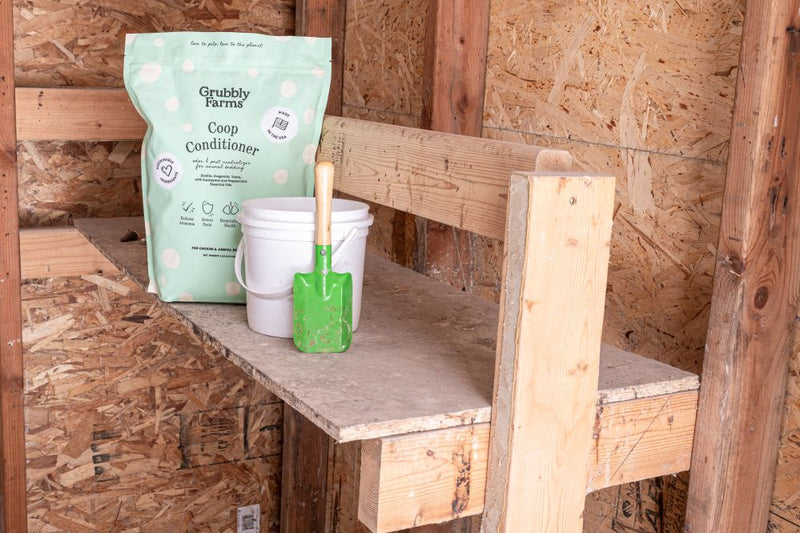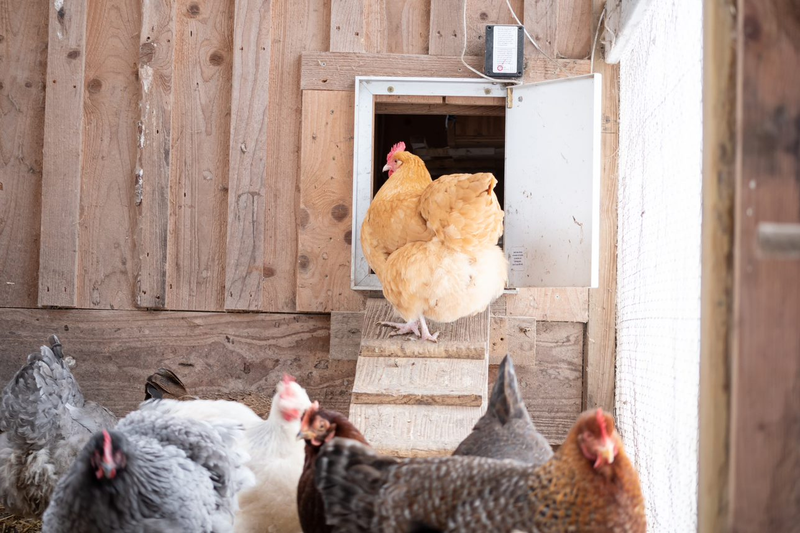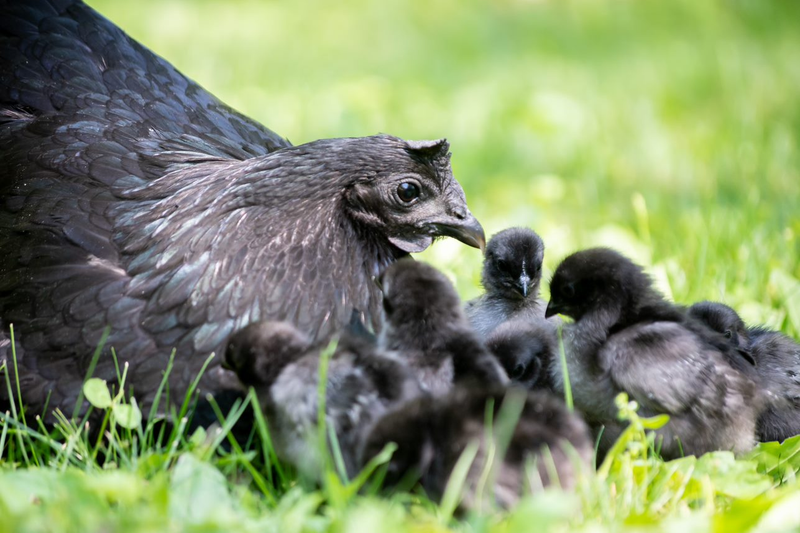There’s nothing worse than stepping into the chicken coop only to be greeted by the pungent odor of chicken poop. Not only is that smell repulsive to us, but it can also be dangerous to the health of your flock. Learning how to control odor in the chicken coop is important for raising healthy backyard chickens! Once you find out the basics of what causes your coop to smell, you can take simple, actionable steps to ensure your chicken coop stays smelling fresh and clean.
Understanding the Causes of Coop Odor
A clean, well-maintained coop should have minimal odor, so strong smells in the chicken coop indicate an underlying issue. The main causes of odor in the chicken coop include:
- ammonia buildup
- excessive moisture
- poor ventilation
- overcrowding
These four causes often build off of each other. For example, if you have excessive moisture in the coop, it increases the release of ammonia gas into the air. Additionally, overcrowding in the chicken coop can cause droppings to accumulate, which produces more moisture... leading to more ammonia. Then, if the coop has poor ventilation, neither moisture nor ammonia gas can escape and instead they build-up in the coop.
Let’s take a closer look at each of these main causes of odor in the chicken coop.

Ammonia Buildup: The #1 Cause of a Smelly Coop
Ammonia is the number one cause of odor in the chicken coop. Excessive moisture, poor ventilation, and overcrowding just increases the amount of ammonia in the coop. If you can control ammonia in the coop, you can control the main source of odor in a smelly coop.
Ammonia is a natural byproduct of chicken poop. It is a colorless gas that has a distinct pungent odor. Ammonia is released when the uric acid in chicken poop starts to decompose, which begins almost immediately after the chicken expels waste. Uric acid is a nitrogen-rich compound in chicken poop. When exposed to moisture and bacteria, it undergoes a process called urease hydrolysis which releases ammonia gas.
When chicken waste is maintained properly, ammonia doesn’t have a chance to build up and cause odor in the coop. Ammonia becomes a problem when chicken waste starts to accumulate or when high levels of moisture or bacteria are present in the coop as well.
High levels of ammonia in the chicken coop can cause irritation to a chicken’s respiratory system and overall health. The pungent gas can lead to health issues such as:
- Conjunctivitis
- Ammonia blindness
- Respiratory distress (coughing, sneezing, wheezing)
- Reduced feed intake
- Drop in egg production
- Weakened immune system (prone to disease)
Ammonia is not just hazardous to our flocks, it can affect our health too. Breathing in ammonia gas can cause respiratory distress as well as skin and eye irritation.
Recognizing that the chicken coop smells like ammonia means that you need to take measures to control ammonia in the coop and consider if the other three causes of odor in the coop are causing ammonia to build up.
Moisture & Humidity: The Hidden Culprit
Moisture and humidity accelerate the release of ammonia and encourage bacteria growth, both of which can cause odor in the chicken coop. The presence of moisture provides the ideal conditions for unhealthy bacteria and microorganisms to thrive on the nitrogen-rich uric acid found in chicken poop. Moist conditions that are also warm and humid encourage the growth of harmful bacteria.
When harmful bacteria start to proliferate, chicken poop starts to decompose much faster, which amplifies ammonia production. One of the main sources of moisture in the chicken coop is wet bedding (litter). Chicken coop litter can become moisture saturated from these causes:
- spilled water
- rainwater seepage
- lack of proper drainage
- high concentrations of droppings

Poor Ventilation: Trapping Odors Inside
A poorly ventilated chicken coop will trap ammonia gas and moisture in the chicken coop, causing the chicken coop to become smelly. Lack of airflow in the coop prevents ammonia and moisture from dissipating. When the chicken coop air is not regularly replaced with fresh air, the concentration of ammonia vapor in the air increases.
Stale aid in the chicken coop leads to an increased risk of respiratory infections in chickens. High concentrations of ammonia vapor in the air can even cause burning sensations and blindness.
During the summer, poor ventilation can trap heat and humidity in the coop. During the winter, poor ventilation traps moisture in the coop that is produced from a chicken’s normal respiration and from the moisture released in chicken poop. All of these factors contribute to ammonia build up in the coop.
Overcrowding: Too Many Chickens, Too Much Waste
Lastly, overcrowding can contribute to a smelly coop. More chickens = more chicken poop. The more chicken poop that is in the coop means the faster ammonia can build up. When there is too little space in the chicken coop for the number of chickens in a flock, it makes it harder to manage litter and keep conditions dry in the coop.
Additionally, overcrowding stresses chickens. Stress can lead to feather pecking, bullying, a drop in laying, and other health or behavioral issues.

Best Practices for Preventing Coop Odor
Understanding the causes of odor in the chicken coop can help you control the source of the issue. There are several ways you can prevent a smelly coop by simply controlling the source of the smell:
- Cleaning- Cleaning the coop regularly removes sources of ammonia, like droppings and moisture.
- Bedding- Using absorbent litter can help with moisture control.
- Ventilation- Increasing air flow in the coop helps remove stagnant air, dissipates ammonia gas in the air, and reduces ammonia gas concentrations.
- Moisture- Removing sources of moisture in the coop reduces ammonia.

Proper Coop Cleaning Routine
Let’s start by discussing coop cleaning. Cleaning the coop is one of the best ways to manage odor in the chicken coop. Chicken coop cleaning routines will vary depending on your climate and what chicken coop bedding (litter) you use. Additionally, how much time your flock spends in their coop will contribute to how often you need to clean it.
Chickens who spend most of their time in an outside enclosure and only go into the coop to roost at night will make cleaning the coop much simpler. During inclement weather, your chickens may spend more time inside the coop, which could result in more frequent cleanings.
Here is an example of a chicken coop cleaning routine:
- Daily Maintenance – Remove wet or soiled bedding. Remove droppings.
- Weekly Cleaning – Replace dirty bedding, scrub waterers and feeders.
- Monthly Deep Clean – Wash surfaces with a non-toxic cleaner and allow proper drying.
- Seasonal Checkups – Inspect for mold, leaks, and structural issues that trap moisture.
Choosing the Right Bedding for Odor Control
Choosing the right bedding (litter) for your chicken coop will influence how often you have to clean the coop. Any litter that you use in the chicken coop can get oversaturated with moisture and contribute to odor in the coop if it is not managed properly.
However, some litters are easier to maintain than others. Here are some of the best litter choices that have high absorbency (can control moisture) and will help control odor in the coop:
- Hemp bedding
- Pine shavings
- Straw
Litters that require more maintenance or that retain moisture and odor more readily include:
- Sand (must be cleaned daily)
- Newspaper (becomes soggy very quickly)
- Fine shavings (clumps and mats easily when moistened)
Litter that decomposes quickly will need to be changed frequently. Using a thick layer of absorbent litter can optimize the usable life of that litter. Thin layers of litter become moisture saturated quicker and do not stimulate the natural composting process. Make sure the litter in the chicken coop is always 3-4 inches thick for optimal moisture absorption.
Additionally, the use of droppings boards can help prolong the life of the chicken coop bedding and make daily cleaning much easier. Droppings boards collect the nightly droppings under the roosts in the coop. In the morning, you can clean off the droppings board, which effectively removes a source of moisture and ammonia every day. When nightly droppings are removed every morning, it prevents the litter from becoming saturated, which increases the usable life of the litter.
Improving Ventilation to Reduce Odors
In addition to proper cleaning and good bedding choices, the chicken coop should also be well-ventilated. Ventilation in the coop allows for the exchange of air. It allows for a two-way airflow, versus drafts in the coop which are usually only a one-way airflow. Ventilation allows old, stale air to escape along with moisture and ammonia vapors. Then fresh, clean air can enter the coop to replace the old air.
Installing windows on the east and south-facing walls of the coop can help provide ventilation. Creating vents near the roofline of the coop is also an effective way of ventilating the coop. Make sure you cover any windows or vents with hardwire to keep the coop predator-proof at the same time. Allow at least one square foot of ventilation per ten square feet of coop space.
During the summer, placing a fan in the chicken coop doorway or windows can help circulate warm air out of the coop. This not only helps keep the coop cooler, but it helps prevent ammonia vapors from building up during warm weather.

Managing Moisture to Prevent Ammonia Buildup
Managing moisture in the chicken coop is essential for controlling ammonia. The more moisture that is in the coop, the more likely ammonia is to build up. There are several ways you can work to keep the coop dry:
- Fix leaky waterers
- Elevate the coop
- Ensure proper drainage around the coop
- Remove droppings regularly
- Choose proper litter
- Use moisture absorbing materials in the coop litter
Chicken poop and waterers are the number one contributors to moisture in the coop. Make sure the waterers you use don’t leak or allow water to drain into the litter. When possible, keep the waterers outside to prevent the litter in the coop from getting wet.
If the waterer is located inside, make sure it is out of the way so your chickens don’t knock into it when they fly down from roosts or nesting boxes. Using a hanging system to keep the waterer off the floor of the coop can also help prevent chickens from accidentally knocking the waterer over.
To control moisture from chicken poop in the coop, you should remove the droppings regularly and use an absorbent litter. Droppings boards can help you easily remove nightly droppings from under the roosts. Absorbent litter that is at least 3-4 inches thick can help manage the moisture from daytime droppings. Make sure you replace the litter before it gets oversaturated with chicken poop.
You can also add moisture absorbing products to the chicken coop litter and droppings boards. Activated carbon and zeolite are two natural products that absorb moisture and can be use in the chicken coop.
Natural Odor Control Solutions
Once you have taken measures to address the source of odor in the chicken coop, you can also implement some natural odor control solutions that can help the coop stay smelling fresh and clean. Here are some natural odor control solutions:
- Herbs
- Natural DIY additives
- Natural odor control products
Make sure that you are not just using these solutions to ‘cover up’ the odor in the coop. If the coop is smelly, you need to address the source of the smell and not just cover it up. However, these solutions can be used after you have addressed the source of the smell in the coop.
Using Herbs and Natural Additives
Herbs and natural additives can add a pleasing aroma to the chicken coop. Since herbs are completely all-natural, they are totally safe to use in the coop and are even beneficial if your chickens happen to nibble on them. Some aromatic herbs to put in the coop include:
- Lavender
- Mint (all varieties)
- Thyme
- Lemongrass
You can hang up fresh bundles of these herbs inside the coop, place sprigs in the nesting boxes, or sprinkle dried herbs over the droppings boards. You can also plant these herbs around the exterior of the chicken coop and enclosure.
Another natural additive that can be used in the coop is a DIY coop deodorizer. Homemade coop deodorizers are usually made from a combination of white vinegar and a blend of essential oils. The deodorizer can be sprayed in the coop to create a pleasing aroma. Common essential oils to put in coop deodorizers include:
- Rosemary
- Lemongrass
- Peppermint
- Tea tree
Lastly, diatomaceous earth is often touted as a natural additive that can absorb moisture and neutralize smells. However, diatomaceous earth is a very fine powder that consists of small, harsh exoskeletons. The fine dust of DE can cause respiratory issues in chickens if it is inhaled frequently.
Products That Help Control Coop Odor
Aside from natural odor control products like herbs and homemade deodorizer sprays, there are also odor control products that you can invest in to help the coop stay fresh and clean.
Coop Refresher Powders- Coop refresher powders are blends that help control moisture and neutralize odor in the chicken coop. Grubbly Farms Coop Conditioner is one such powder that can be used in the chicken coop! It is a blend of all natural, non-toxic products, including zeolite and calcium carbonate.
Zeolite absorbs moisture and neutralizes nitrogen, which is the main source of ammonia gas in chicken poop. It binds to the ammonia in the air, removing it from being a threat. Calcium carbonate (lime) helps stop the growth of pathogens with its high pH levels, which then also helps prevent ammonia from being released when chicken poop decomposes.
You can use a coop refresher powder, like Coop Conditioner, in the chicken coop bedding and on the droppings boards.
Deep Litter Method- While not necessarily a product, the deep litter method does require that you purchase the right bedding in order to make it work effectively. The deep litter method encourages beneficial microbes to break down waste naturally, which prevents the buildup of ammonia gas.
The deep litter method is only suitable during the winter or in cold climates. The decomposition of the litter and droppings generates natural heat, which is not necessary during warm weather.
If you do use the deep litter method, you will need a small-particle compostable litter as a base layer (wood shavings or hemp bedding) and a large-particle compostable litter as the top layer (straw). The deep litter method must be started and maintained properly in order for it to compost properly without producing ammonia or causing moisture to buildup.
Automatic Waterers- Automatic waterers are helpful products to invest in that can reduce water spillage and keep the chicken coop bedding dry. Hanging automatic waterers are a good system to prevent chickens from tipping over the waterer.
Air Purifying Fans or Filters- You could also purchase air purifying fans or filters to enhance ventilation in the coop and remove airborne particles. If installing an air purifying system in the chicken coop, make sure all electrical connections are made properly. Do not use extension cords in the chicken coop.
Final Thoughts on Chicken Coop Odor Control
To keep the chicken coop smelling fresh and clean you must address the main source of odor in the chicken coop: ammonia. Addressing ammonia includes a combination of proper cleaning, moisture control, coop ventilation, and strategic use of odor-neutralizing products. A fresh-smelling coop benefits both chickens and their owners, ensuring a healthier and more enjoyable backyard poultry experience for everyone!
Sources:
